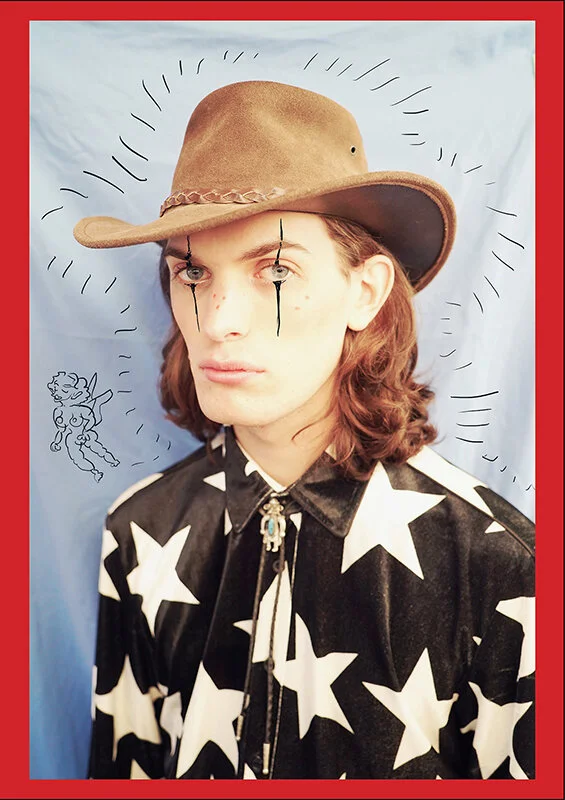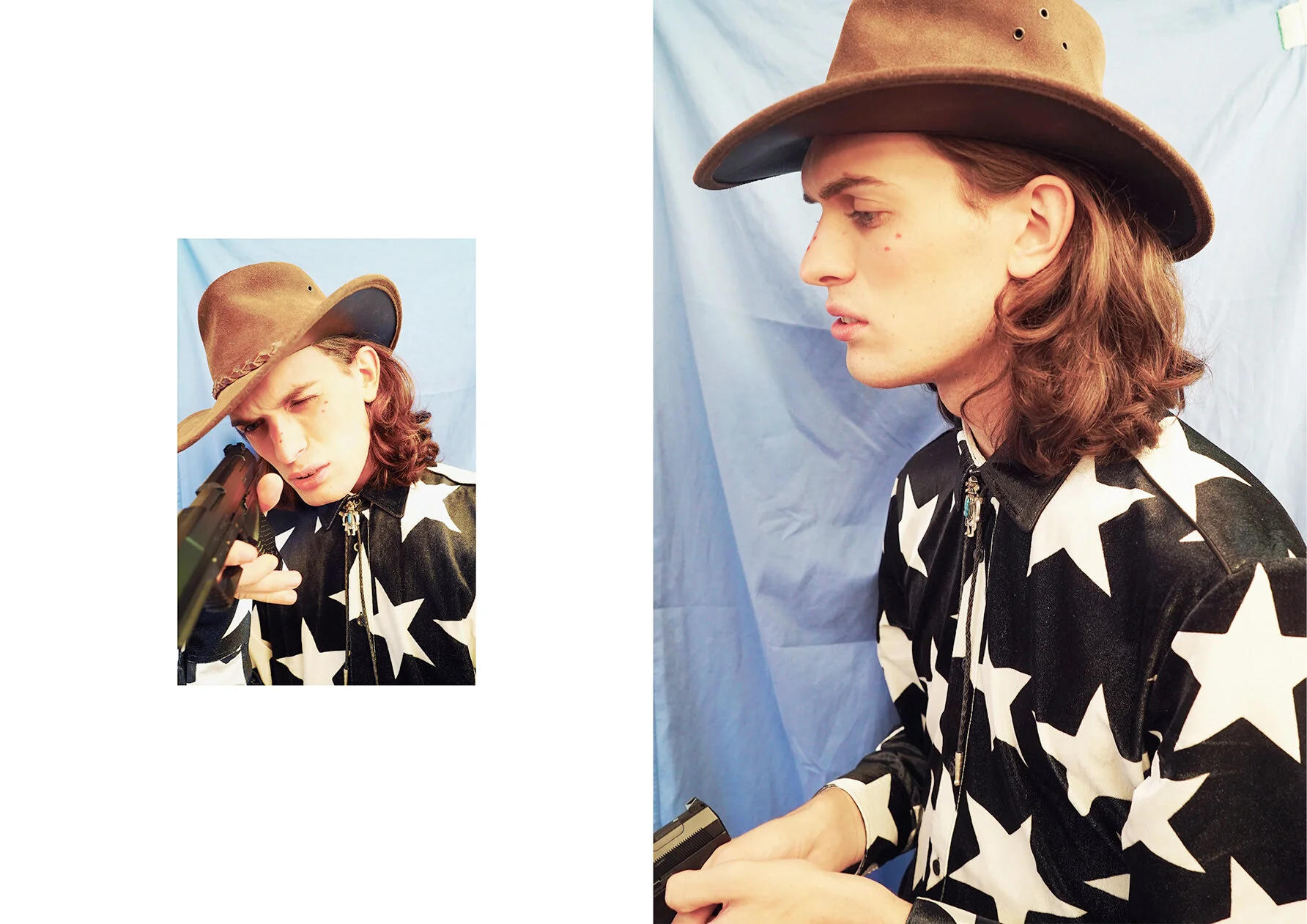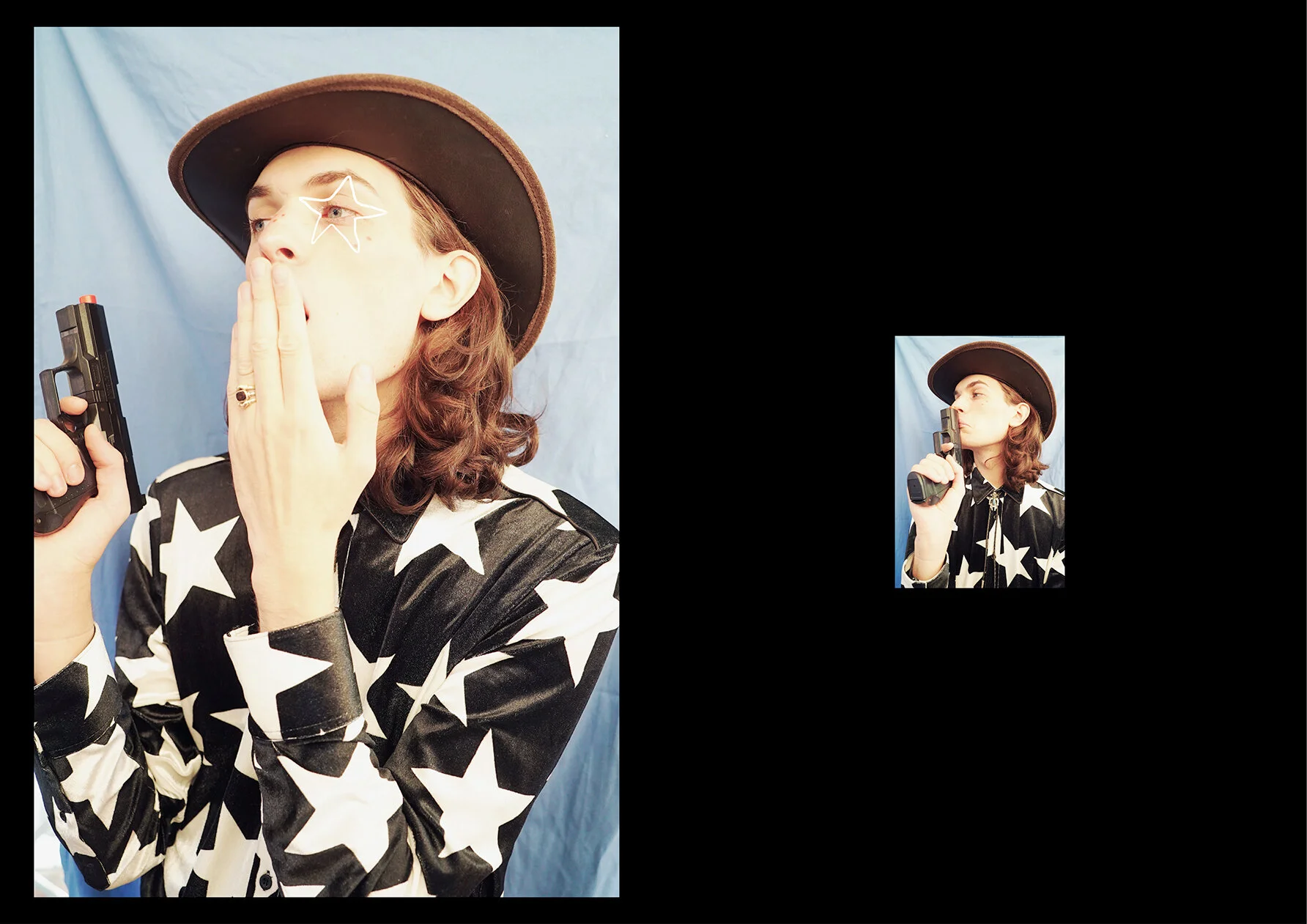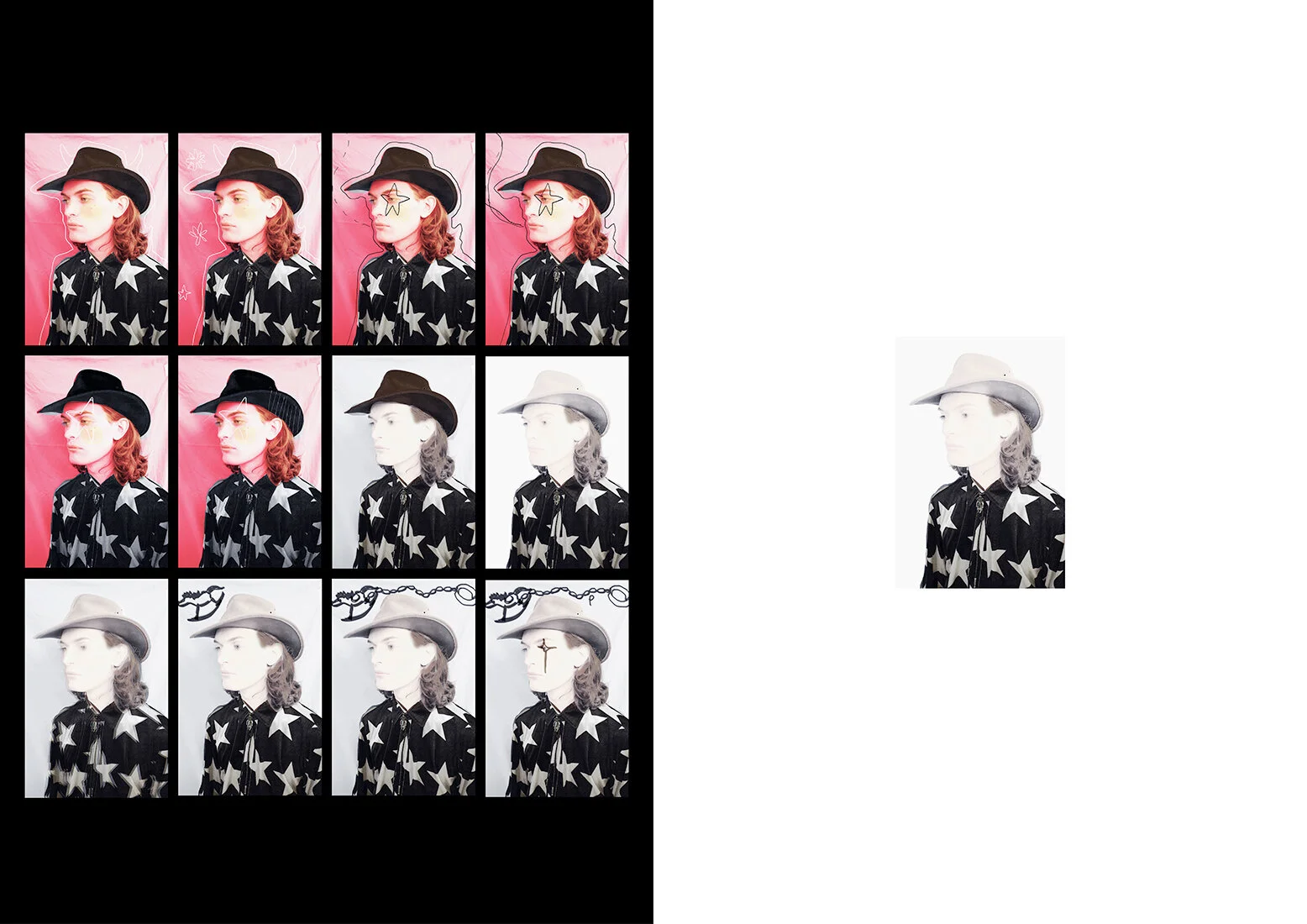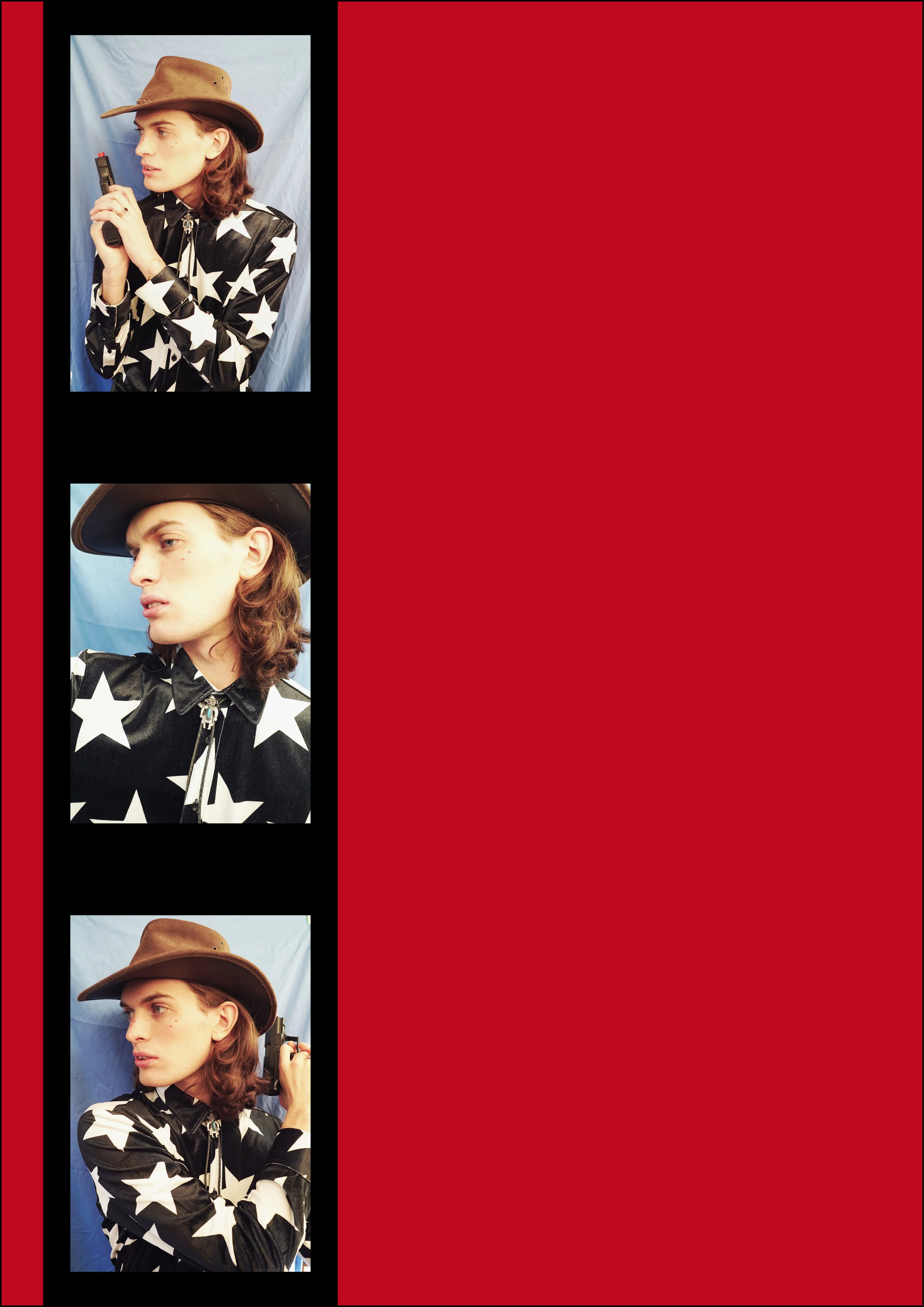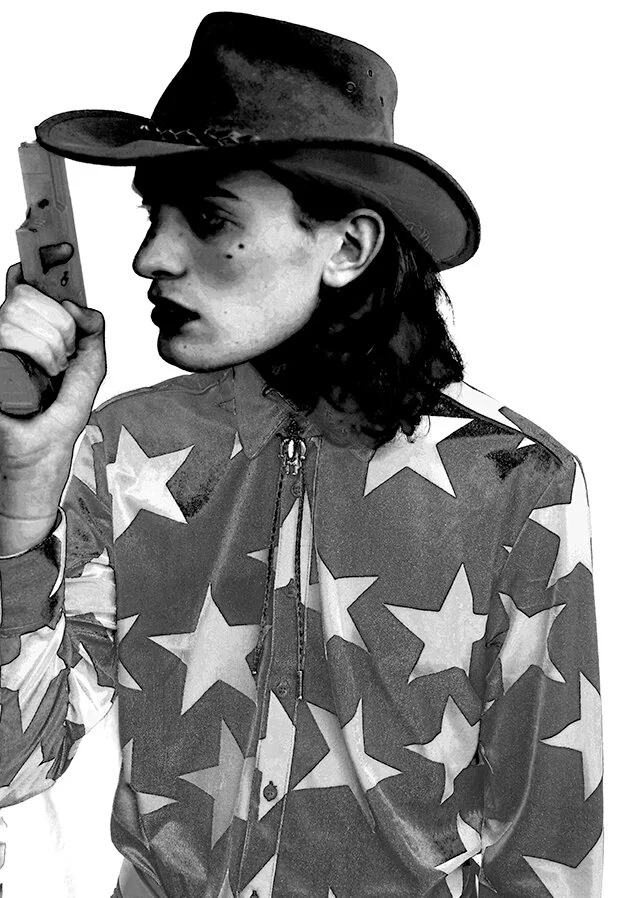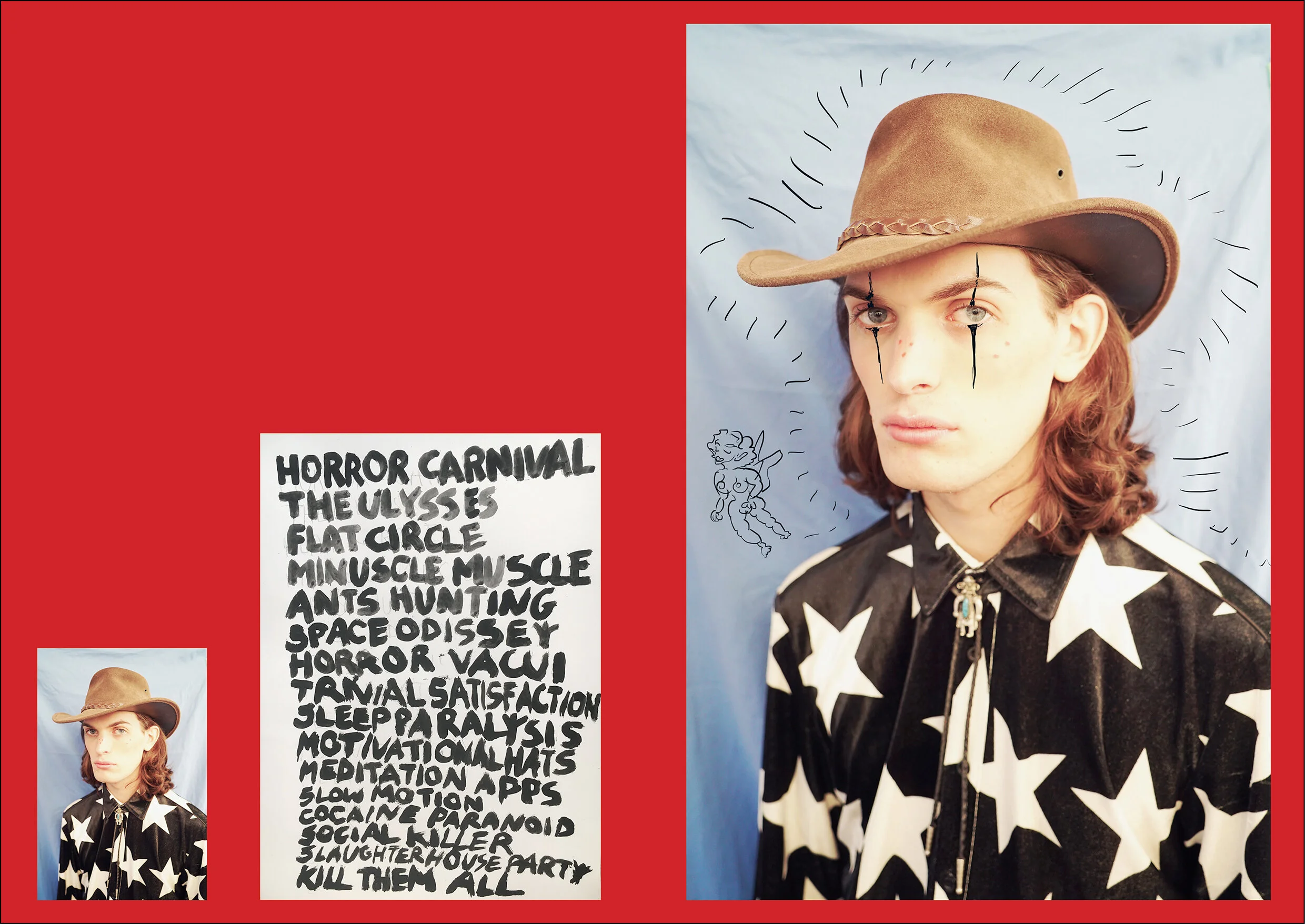Mid-Lockdown Cowboy -Reflecting on Masculinity and the American Dream / A Photo Series
Combining the stereotypical characters of Spaghetti Western blockbusters with the identity crisis of the lockdown-age man, art director Aurora Rossa Manni envisions her modern cowboy.
“I’m going where the weather suits my clothes,” gently croons Harry Nilsson in the theme song of John Schlesinger’s 1969 masterpiece Midnight Cowboy; the film that adapted to the big screen novelist James Leo Herlihy’s decadent and poetical vision of the American Dream failure. Clothes are, nonetheless, the staples of the cowboy identity, just as much as his horse and his gun. These elements make up what, in popular culture, is envisioned as the cowboy stereotype.
In the film, in fact, Joe Buck’s (Jon Voight) personality transfiguration - from Texan kitchen porter to New York gigolo - takes place through the clothes he proudly wears: a cowboy hat, a couple of rodeo shirts in red and mint green, a suede tassel jacket and a pair of boots with hotspurs. Ironically, Buck needs stereotypical Texan clothes when away from home, as if they were sufficient to portray him as a character, and to turn him into an easily decoded piece of human semiotics.
The failure of Joe’s dream and, with it, of the whole American Dream happens via the aesthetic deterioration of the character’s clothes; as to suggest that by 1969 the USA were dirty, tired and fatigued and, mostly, that uniforms from promises of freedom can soon turn into psychological cages.
The cowboy character has been part of Aurora’s family for a very long time, since his grandfather, legendary Italian director Duccio Tessari, jumped on the Spaghetti Western bandwagon that shook with excitement European cinema between the mid-60s and the early 70s.
“During the lockdown, Lorenzo (Sutto, the model and Aurora’s boyfriend) and I have worked in the limited space of our bedrooms and of our nostalgia connected to our shared cultural background,” explains the art director. “Considering my family’s attachment to the Spaghetti Western genre, I always nurtured a strong curiosity towards the figure of the cowboy, the male hero and anti-hero.
“Mostly, though, it is the idea of masculinity to him attached in the form of his testosterone and braggadocio to make him so funny and quintessentially American; to the point that he as often been absorbed and ironically re-interpreted by past Italian cinema, like that my grandad made.”
Working on a baby blue palette purposely reminiscent of male childhood, by using toy guns and Carnival costumes, Manni portrays a cowboy who is the evolution of the gender roles developed as kids when boys are expected to be strong, heroic and overbearing.
“I decided to represent a child cowboy, cheeky, nasty, and unruly, because this is the ridiculous idea of masculinity we grow up with in our heads,” explains Aurora. “He’s a cowboy that, by believing that he can conquer and dominate everyone and everything with a toy gun, is actually closer to a clown than to grown adult.”
Adorned with childish drawings and writings relating to the couple’s shared cultural references, the photo series gives us a peek not only into the creatives’ intimacy, but also a visual representation of how the anxiety and mental illnesses generated by the lockdown can affect one’s identity and representation of the self.
Styling: Aurora Rossi Manni
Photography: Aurora Rossi Manni
Graphics: Aurora Rossi Manni
Model: Lorenzo Sutto
All photos by Aurora Rossi Manni for Synaesthetic Magazine. 2020, all rights reserved.
